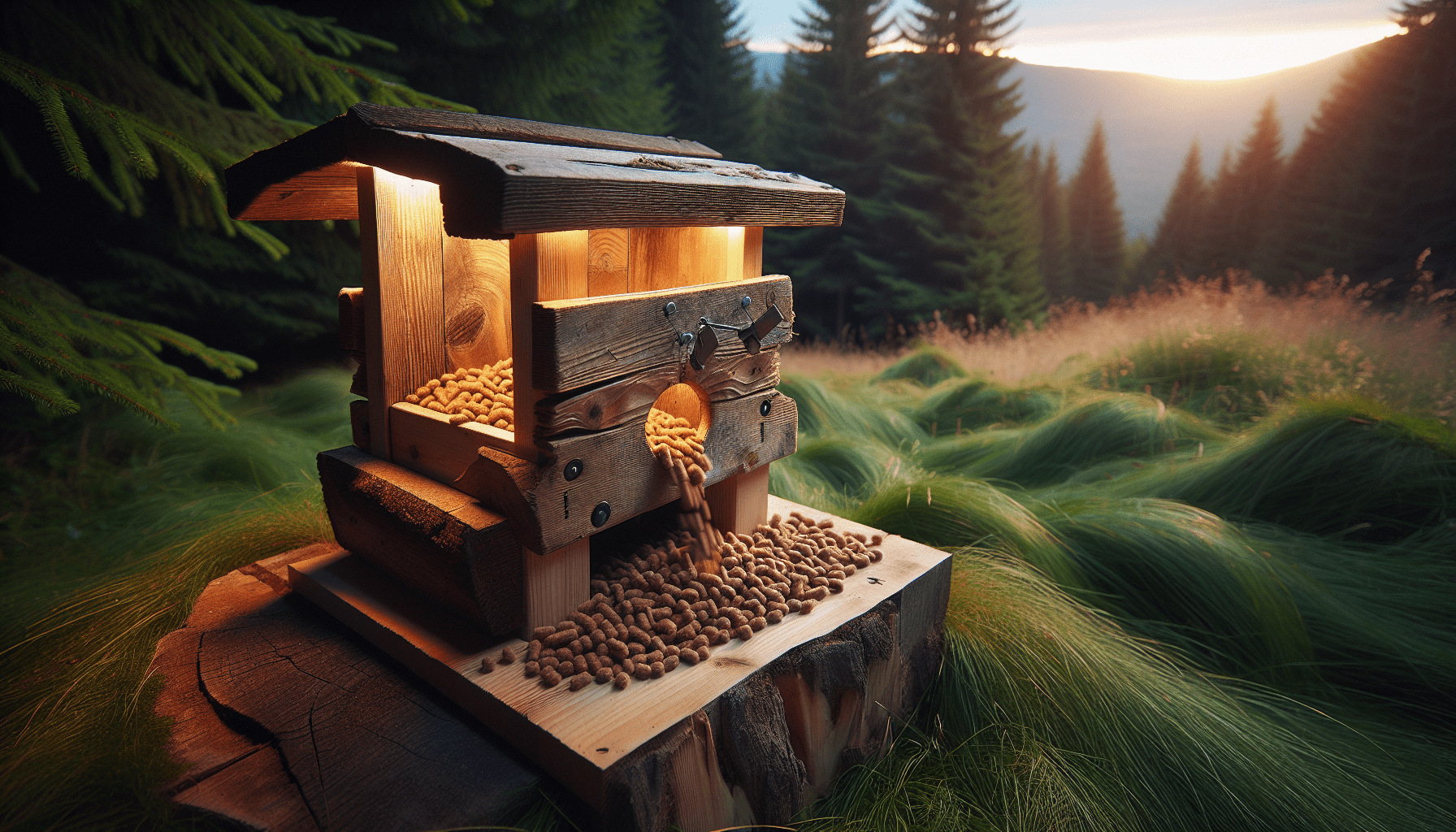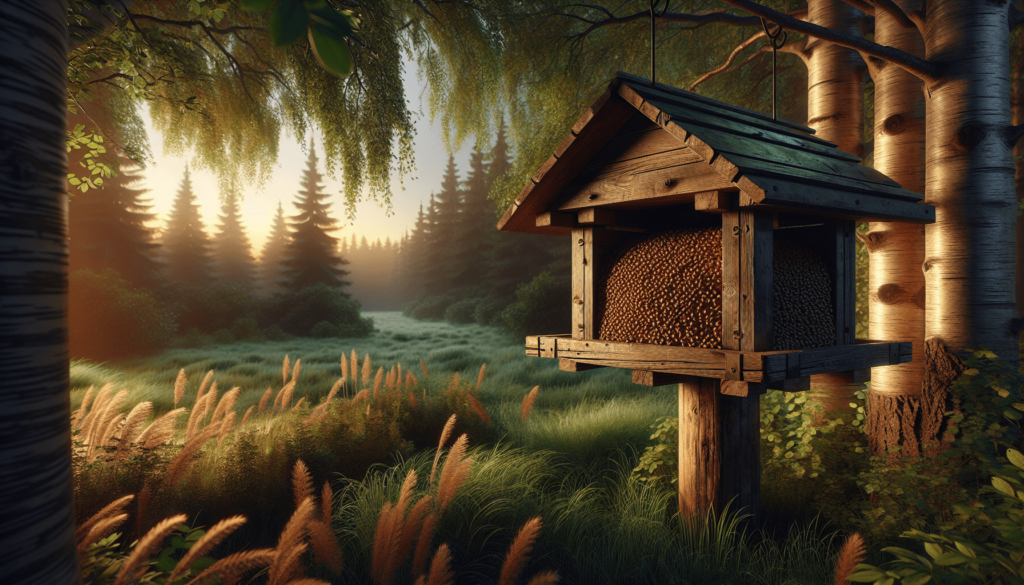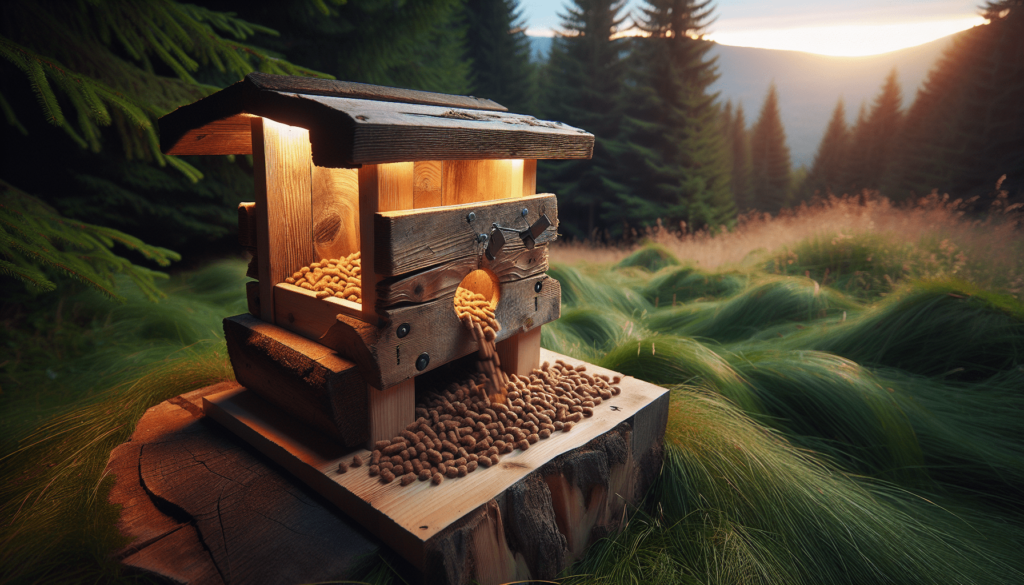
What if you could create a feeding solution for deer that fits your budget and fulfills your desire to support wildlife? You’re not alone in wanting to provide food for these magnificent creatures, especially during harsh seasons. Luckily, DIY deer feeders can be not only cost-effective but increasingly fun to build!

Understanding Deer Feeding Needs
Before you start gathering materials, it’s important to understand what deer truly need for their nourishment. Whitetail deer, the most common species in North America, require a well-balanced diet that includes protein, carbohydrates, vitamins, and minerals.
Seasonal Feeding
Deer’s dietary needs change with the seasons. In spring and summer, they need higher protein intake to support growth and lactation. During fall and winter, they shift to foods that provide more carbohydrates. Understanding this shifts your approach as a feeder. You’ll want to plan your food offerings accordingly.
Types of Feed
Choosing the right feed can make a significant difference. Here are a few types you might want to consider:
| Type of Feed | Description | Best Time to Feed |
|---|---|---|
| Pellets | Highly nutritious and easy to digest | Year-round |
| Grain | High in carbohydrates; great for winter feed | Winter |
| Protein Blocks | Provides essential nutrients; can be used all year | Year-round |
| Fruits & Vegetables | Natural options; deer love apples, corn, carrots, etc. | Late summer to fall |
Feeding Regulations
Before you start feeding, it’s wise to check your local regulations. Some areas have specific rules regarding feeding wildlife, especially if hunting is a factor. Ensuring you’re compliant protects both you and the deer, keeping the animals safe while preventing potential fines.
Affordable DIY Feeder Ideas
Building your own deer feeder can be a worthwhile project that doesn’t have to break the bank. Let’s take a look at some solid, budget-friendly deer feeder ideas that you can easily put together.
PVC Pipe Feeder
Using PVC pipes helps in constructing a simple and effective feeder.
Materials Needed:
- 4-inch diameter PVC pipe
- End caps (for the bottom)
- A saw
- Drill with a hole saw bit
Steps:
- Cut the PVC pipe to your desired height (usually 4-6 feet).
- Drill holes along the side—make them big enough for deer to access feed.
- Attach the end caps to the bottom and secure them tightly.
- Fill the pipe with pellets or corn, and place it in your chosen feeding area.
This feeder is durable and prevents feed from being spoiled by moisture.
Wooden Pallet Feeder
Relying on what you might already have, wooden pallets can make for an easy DIY feeder.
Materials Needed:
- Wooden pallet
- Nails or screws
- Wood glue
Steps:
- Find a sturdy wooden pallet. These are often available for free from local businesses.
- Position the pallet on level ground.
- If needed, reinforce it by adding additional wooden support.
- Fill the slots of the pallet with your selected feed.
Not only is this budget-friendly, but it’s also a sustainable way to repurpose materials.
Drum Feeder
An old barrel or drum might already be sitting in your garage or yard; let’s transform that into a feeder.
Materials Needed:
- 55-gallon drum
- A saw
- Hinges (optional)
Steps:
- Cut holes into the side of the drum that are big enough for deer to access but not so large that all the feed spills out.
- If you wish, attach a hinged door for easy access when refilling the feeder.
- Position the drum in a favored deer spot and fill it with feed.
This design keeps the feed dry and sheltered from the elements.
Trough Feeder
Building a trough feeder is one of the more classic approaches and offers a sturdy feeding solution.
Materials Needed:
- Treated lumber (for weather resistance)
- Hammer and nails (or a power drill)
- Saw
Steps:
- Cut the wood into sections to form a trough shape—two long pieces and two shorter end pieces.
- Nail or screw the pieces together.
- Position the trough on level ground and fill it with feed.
This option can be larger and can accommodate more deer at once, particularly during the colder months.
Hanging Feeders
If space is limited or you wish to keep feed off the ground, consider creating a hanging feeder.
Materials Needed:
- A strong, weather-resistant container (like a bucket)
- Rope or chain
- Drill and screws
Steps:
- Drill a few holes into the container for the feed to drop through but not too big to cause a spill.
- Attach the rope or chain to secure the container.
- Hang it from a sturdy branch or structure at a height that is accessible to deer.
The hanging design keeps feed safe from many ground-level pests and water damage.
Choosing Your Feeding Location
Placement is everything when it comes to feeding deer welfare. Here are some tips to keep in mind:
Near Natural Cover
Placing your feeder near natural cover, like bushes or trees, encourages deer to eat and feel safe. They are creatures of habit, so ensure that your location promotes a natural path leading to food.
Away from Human Activity
Avoid placing feeders in high-traffic areas where deer may face disturbances from people or pets. Choosing a secluded corner or deep in the woods creates an inviting area for them.
Easy Access
Ensure it’s easy for you to refill without disturbing the deer. If you’re scaring them away frequently, the feeder loses its purpose.
Maintenance Tips for Your Feeder
Once you’ve put the effort into building and placing your feeder, you want it to last. Regular maintenance ensures that your deer feeding solution remains effective.
Check for Damage
Inspect your feeder regularly for signs of wear or damage, especially after storms or heavy use. Paying attention will allow you to make the necessary repairs so your feeder remains functional.
Clean Regularly
Keeping the feeder clean helps prevent mold and sickness among the deer population. Use a mild soap solution to wash your feeder occasionally. Rinse thoroughly to avoid any lingering soap residues.
Refill with Fresh Feed
Frequent refills with fresh feed are essential. Avoid leaving out old or moldy food, as this can be harmful to deer health.

Handling Your Expenses
Quality feeding solutions don’t have to demand high costs. Here are some clever ways to manage your expenses.
Bulk Buying
When you find a feed that works well, think about buying in bulk. Local co-ops or farms may offer discounts, which can lower your overall costs dramatically.
Bartering with Friends
If you’ve got friends also interested in deer feeding, consider pooling resources. Split costs for feed delivery, or trade building skills, material, or knowledge you may have.
Check Online Classifieds
Sometimes, you can score great deals on feeders or useful materials through local classifieds or online platforms like Facebook Marketplace. People frequently list items they’re looking to sell or give away at little to no cost.
DIY Repairs
Instead of replacing a damaged feeder, learn to repair it. The internet is full of tutorials and advice that can guide you through fixing materials rather than buying new.
Environmental Considerations
Supporting local wildlife is important, but so is being mindful of the impact your feeding can have on the environment.
Avoid Overfeeding
Feeding deer can inadvertently cause overpopulation in certain areas, especially if they become reliant on human-provided food. It’s essential to monitor how much you’re feeding and ensure the deer aren’t becoming dependent on your efforts.
Native Planting
In addition to feeders, consider planting native plants in your area. These plants can provide natural food sources and enhance the habitat for wildlife, ensuring a sustainable ecosystem.
Pesticide-Free Practices
If you’re growing food or feeding deer from a garden, maintain chemicals that aren’t harmful. Pesticides can affect wildlife, so opt for organic methods or natural alternatives.
Conclusion
Creating budget deer feeding solutions through DIY efforts can be a fulfilling and impactful way to support wildlife. Remember the needs of deer, maintaining your feeders, and considering the environment as you engage in this activity. With a little creativity and resourcefulness, you can create an effective feeding system that enhances both your enjoyment and the well-being of deer in your area.
By taking these steps, you’re not just building a feeder; you’re creating a sanctuary, a space where nature can flourish with your encouragement. The clear skies, rustling leaves, and peaceful presence of deer will be your rewards, reminding you of your contribution to wildlife support.





